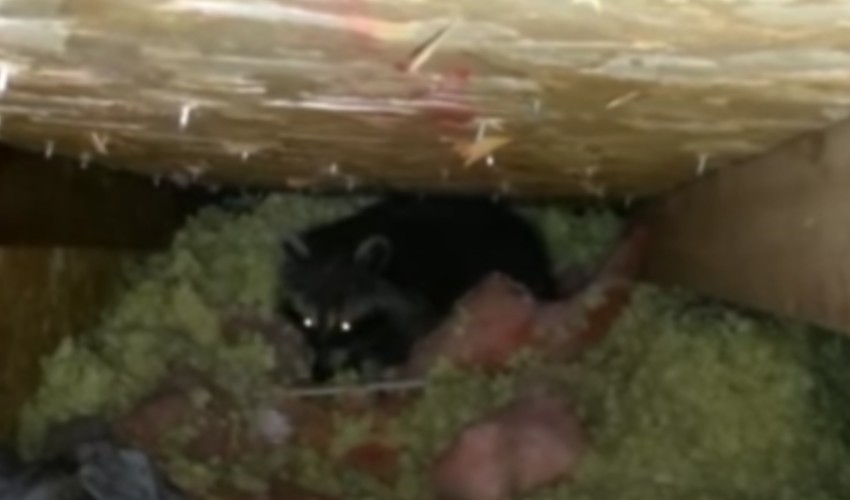
If you really don’t want to use the assistance of a professional wild animal removal guy, you’re going to need to do your research when learning how to get a raccoon out of your attic. These creatures are well adapted to living right next door to humans, and they’re getting very good at passing us by unnoticed. They are also very good at getting to those really difficult to reach places within your home, posing all kinds of problems for you when it comes to evicting them.
Generally, the raccoon won’t be by itself. If it has set up camp in your attic, it is likely to be a female raccoon and there are going to be babies in tow. You can’t just get rid of the mother without the babies, so before you even attempt to trap and remove the adult, finding and removing the babies is essential. There’s a good chance you’ll be crawling around on the attic floor on your hands and knees for a while, ear to the wooden foundations, trying to find a hint of where the hell they could be. Wouldn’t you hide your babies somewhere good if you wanted to keep them safe? That’s what this raccoon is doing.
Once you’ve managed to find the babies, and get them out and into a safe unit until you find the mother, it’s time to get your thinking hat on. You’ll need to work out a good position for these traps to sit so that they actually do the job properly. Putting them in the wrong place, or even the wrong direction, will result in either catching nothing, or catching the wrong thing entirely. Before you know it, you’ll have a couple of bats in there, followed by a couple of the neighborhood cats, and maybe even a stray squirrel. It’s pointless catching the wrong thing.
Bait isn’t as important as making sure you have a big enough trap to catch your raccoon in. Believe it or not, this is an animal that can grow to some size, so you’re going to need a pretty decent sized trap to capture it. If it’s too small, it won’t go near the trap, or the trap won’t be able to hold the animal. At the same time, something really big just won’t be discreet anything and is likely to scare the creature off. If you’re thinking about using large snap traps, poison, repellents, or anything else like that, don’t bother. The only way to effectively remove a raccoon from your attic is to trap and release it. There really is no need to kill this animal.
You will need to ensure that you regularly check the traps you have set after you have laid them down. If you don’t, you could accidentally kill an animal, raccoon or otherwise. It could die of dehydration, starvation, or even from attacks from other critters such as rats, all attracted to that yummy dog food you left in the trap, and around it, for the raccoon. You see - there is a lot to take into account here. This is why it’s a good idea to call in a professional. Don’t say we didn’t warn you…
If and when you do successfully manage to trap the mother raccoon, you’ll need to reintroduce her to her babies again, carefully, and then you’ll need to release them back into the wild together. However, what are you going to do with the babies in the time it takes you to find the mother? Are you going to hand-rear them? Leave them to die? Take them to a local shelter? You see - a professional would know exactly what to do. That’s why they are the professionals!
If you have managed to do all of the above and safely captured the rogue raccoon (and it’s potential babies), you will need to drive some distance with them in order to make sure they don’t come back to haunt you. You're looking at about ten to fifteen miles at least, and then you’re going to need to find somewhere appropriate to place them so that they can find their bearings and figure things out.
Your job isn’t quite done yet either - now you need to do the renovation and restoration work on your home, as well as taking preventative measures to ensure the raccoon can’t get back in even if it were to come back, or any other future wild animals for that matter. This means systematically working around your home, inspecting it regularly, looking for new holes, cracks and crevices that a small wild animal could crawl into. These holes and cracks will need to be filled or fixed, and any damage will need to be repaired. That’s before you start to think about getting bungee cords to keep the garbage can lid on, removing the pet food dishes from the back porch, etc.
In short, you want to make your home look as unappealing as possible to the raccoon to make sure it doesn’t want to come back. It’s a long task - a long one for the professionals, and even longer if you don’t know what you’re doing.
Go back to the raccoontips.com home page.
Copyright 2021 - raccoontips.com
Raccoon Resources and Tips